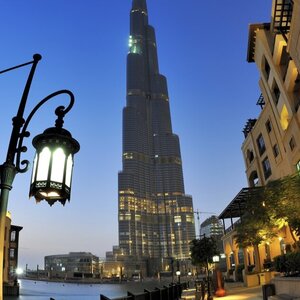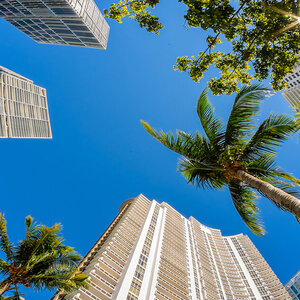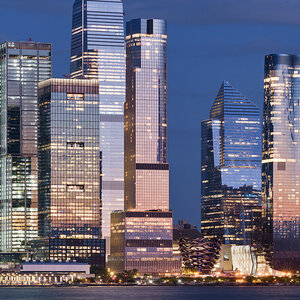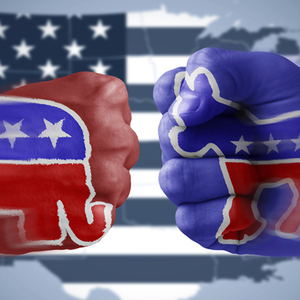The WPJ
THE WORLD PROPERTY JOURNALReal Estate Facts Not Fiction
Residential Real Estate News

Hong Kong's Pristine Parks Under Threat of Property Development
Residential News » Asia Pacific Residential News Edition | By Alex Frew McMillan | February 14, 2014 10:16 AM ET
Hong Kong's country parks, its last pristine spaces, are under attack. With three advisers to the Hong Kong government having advocated the idea of carving into the territory's wild, natural spaces for construction, it is clear their "outbursts" are not impromptu remarks but rather the first salvos in a bid to claim that public opinion supports the idea.
It does not. When the government gazetted the idea of building houses in several delicate parkland sites, 90 percent of the public said they were not in favor of the move. The targets include the secluded beach of Hoi Ha, one of the few places in subtropical Hong Kong where you can find coral.
Many visitors to Hong Kong, particularly those on business, only see the gleaming downtown skyscrapers and crowded streets of the center of town. Movies portray the city as a warren of lanes and neon signs. What most visitors do not realize is that 40 percent of the territory - technically an autonomous part of China - is made up of parkland and wilderness.
These country parks are the equivalent of national parks, if Hong Kong - which at 426 square miles is 80 percent the size of Rhode Island -- were its own nation. They are home to wild boar, barking deer, macaques, pythons, salamanders and numerous birds, some species found only in Hong Kong.
In the past week, Franklin Lam, a former member of the equivalent of Hong Kong's cabinet, said the parks are ripe for development. Lam, who remains a government adviser on a committee set up to develop Hong Kong's largest island, Lantau, said the country parks there were not popular "since the mountains are really high," and claimed that there are "not even many trees," meaning he wouldn't consider the need for environmental protection "by its impact on one or two patches of grassland."
Hong Kong's highest mountains, Lantau Peak and Sunset Peak, are both on Lantau. The country parks that encompass them and make up 69 percent of the island are highly popular hiking and camping spots, and several hiking and trail running events are held each year that bring international competitors to the city. They have been featured in government advertisement campaigns promoting the city.
Another adviser on the Lantau development committee, Kaizer Lau, said on a radio show this week that Hong Kongers should "never say never" to developing these supposedly sacrosanct parks. When asked where locals should go to relax and get away from the stresses of the city, he said that "Hong Kongers are free to travel to the mainland." Mainland China is notoriously polluted and overdeveloped, and many Hong Kongers resent the influx of mainlanders into the city.
Most worryingly, last September, the city's Secretary for Development, Paul Chan, wrote on his blog that discussion was under way to develop land in the country parks if the supply of land is tight. He later claimed that he was merely quoting views expressed to him, and floating them for the community to think about, rather than conveying the government's official stance, after his comments created a heavy backlash.
The country parks in the rural New Territories have also come under attack, with several targeted for the development of the three-story houses known as village houses. Every male descendant who can trace his lineage to the original clans who lived in Hong Kong at the time of its colonization by the British is entitled to build one of the 2,100-square-foot homes in his lifetime. Many are instantly sold on to other Hong Kongers at great profit, and there is a drastic shortage of sites, with more than 200,000 eligible Hong Kongers waiting for a plot.
Paul Zimmerman, a district councilor in the city and the CEO of urban-planning group Designing Hong Kong, agrees that there is a gradual but increasing push to carve out portions of the country parks for "New Towns," large-scale high-rise urban clusters made up both of public and private housing. That, he says, is tantamount to saying that the country parks are just empty land to be used as a resource for development.
Hong Kong is one of the most densely populated cities in the world, with about 23,000 people per square mile in its most crowded district, Kwun Tong. With no space to spare on the Kowloon peninsula and the north shore of Hong Kong island, the territory has built its urban planning strategy around the establishment of New Towns, a concept launched as a wave of refugees arrived in the city after the Communist Party took over China in 1949.
There is a drastic need for new sites for development. But the government has not exhausted its options of converting industrial space, little used now as Hong Kong's industry has moved across the border, as well as government land and disused government buildings for that purpose. Hong Kong's construction companies are also experts at knocking down small buildings and building high-rise blocks in their place.
Once the parks are chipped away around the edges, at sites near roads, railways or existing towns, the beginning of the end will have begun for the city's last wild areas and "green lungs." The views of these advisers are being conveyed to the city's leader, Chief Executive C.Y. Leung, who is by trade a real-estate surveyor and likely to support construction in the parks, particularly if he can say he has been advised that it is a good idea or a necessity.
Hong Kong's wonderful hiking has been profiled in publications such as The New York Times and Financial Times. The city has a high-profile hiking race, the Trailwalker, that brings teams from around the world. The 100-kilometer race, originally a training exercise for the Gurkha troops serving with the British Forces, raises much needed funding for the charity Oxfam and is an event now emulated in 15 overseas locations, from New Zealand and Australia through India to Spain, Belgium and Britain.
They raise the city's profile and attractiveness, set it aside from the mainland, and are the last refuge of Hong Kongers seeking open space and a taste of the wild. It would be foolish, short-sighted and downright selfish to take the "easy out" and turn them into billion-dollar building lots for the city's powerful developers.
Sign Up Free | The WPJ Weekly Newsletter
Relevant real estate news.
Actionable market intelligence.
Right to your inbox every week.
Real Estate Listings Showcase
Related News Stories
Residential Real Estate Headlines
- U.S. Homebuyer Median Down Payment Hits Record $67,500
- New Home Sales in America Jump in July
- Zombie Foreclosures in U.S. Decline in Q3, Reaching Lowest Levels Since 2021
- U.S. Home Sales Uptick in July, First Time in 5 Months
- Italy's 2024 Tourism Boom, Tax Perks Energizing Local Home Sales
- U.S. Builder Confidence Moves Lower in August
- U.S. Mortgage Rates Dip to Lowest Levels in Over a Year in Mid-August
- DOJ, NAR Commission Payment Changes Take Effect August Seventeenth
- U.S. Foreclosures Jump 15 Percent Month Over Month in July
- Over 2.6 Million Western U.S. Homes at Risk of Wildfire Damage in 2024
- Opportunity Zone Homes Across America Enjoy Price Gains in Q2
- Orange County, Chicago, Phoenix, and Washington DC Become Trillion Dollar U.S. Housing Markets
- Los Angeles, San Diego and New York Have Highest Concentrations of Renter Households
- Greater Las Vegas Area Home Sales, Prices Rise in July
- People Are Still Moving at Scale From Fire-Prone to Heat and Flood-Prone America
- Buyer Agent Commission Rates Declining in Wake of NAR DOJ Settlement in 2024
- Miami's Brickell Office Market Hits Record $200 Square Foot Rents in 2024
- U.S. Pending Home Sales Rise 5 Percent in June, First Time in 3 Months
- California Home Sales Dip 3 Percent Annually in June
- Macau's Residential Sales Continue to Decline in 2024
- Greater Miami Residential Sales Slide 13 Percent Annually in June
- Greater Orlando Area Home Sales Down 11 Percent in June
- U.S. Home Sales Slipped Dipped 5.4 Percent in June
- Foreign Investment in U.S. Residential Properties Plummet 21 Percent Over Last 12 Months
- U.S. Housing Rents Growing Fastest in Unexpected Places in 2024
- U.S. Mortgage Rates Tick Down in Mid- July
- Mortgage Bankers Oppose Biden Campaign's Nationwide Rent Control Proposal
- Apartment Building Permits in U.S. Drop Nearly 30 Percent Since Pandemic
- Global Home Price Growth Accelerates in 2024
- Las Vegas Area Condo Prices Rise 7.3 Percent Annually in June
- America's Home Affordability Issues Worsen in Mid 2024
- U.S. Mortgage Applications Dip in Late June
- Greater Palm Beach Area Residential Sales Dip 7 Percent in May
- Typical U.S. Home Selling Less Than List Price in June
- Mortgage Rates in U.S. Dip in Late June
- U.S. Pending Home Sales Fall to All-time Low in May
- Greater Miami Home, Condo Prices Continue to Rise in May
- Ireland Home Prices Rise in Q2, Driven by Inventory Shortages
- Home Sales in U.S. Dip for Third Consecutive Month in May
- Homebuilder Confidence in the U.S. Drops to 2024 Low in June
Reader Poll
Marketplace Links
This website uses cookies to improve user experience. By using our website you consent in accordance with our Cookie Policy. Read More





